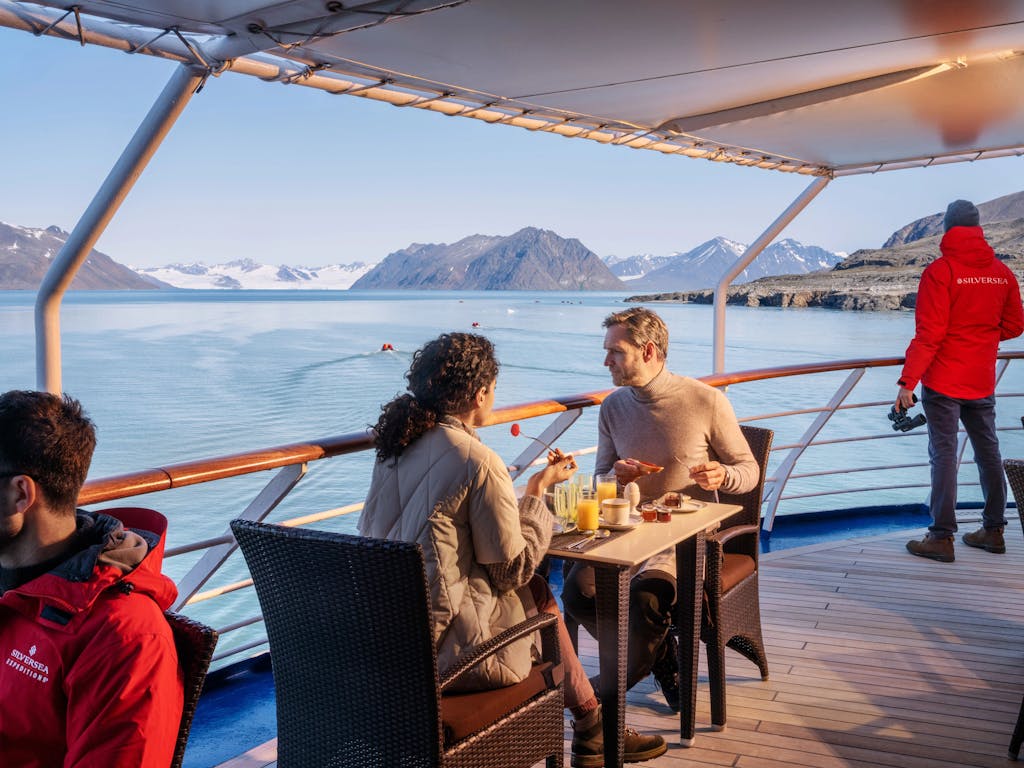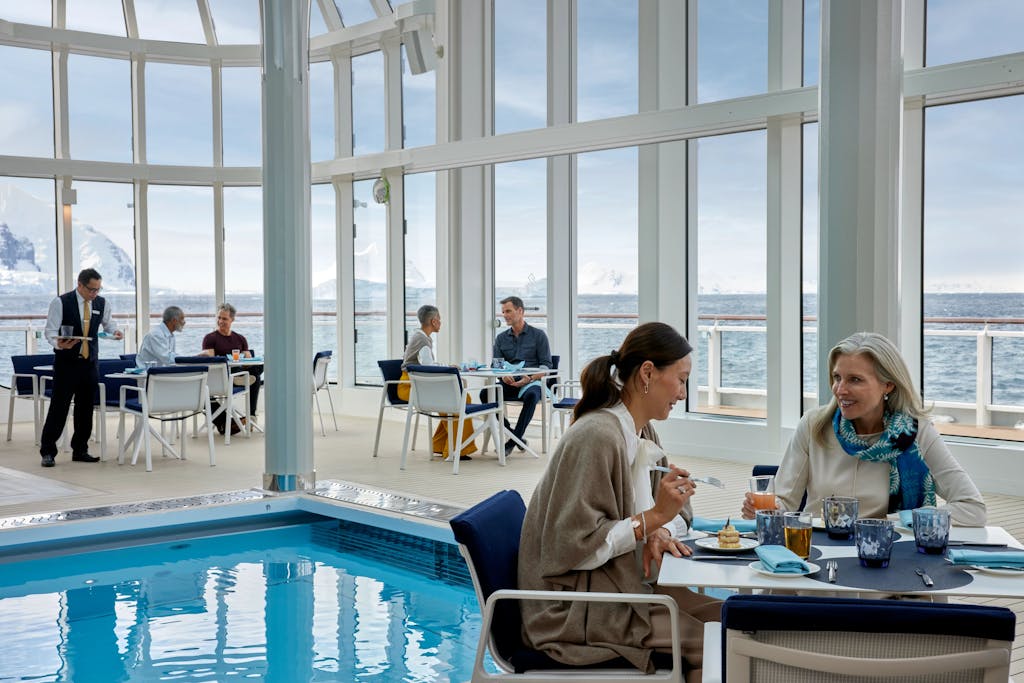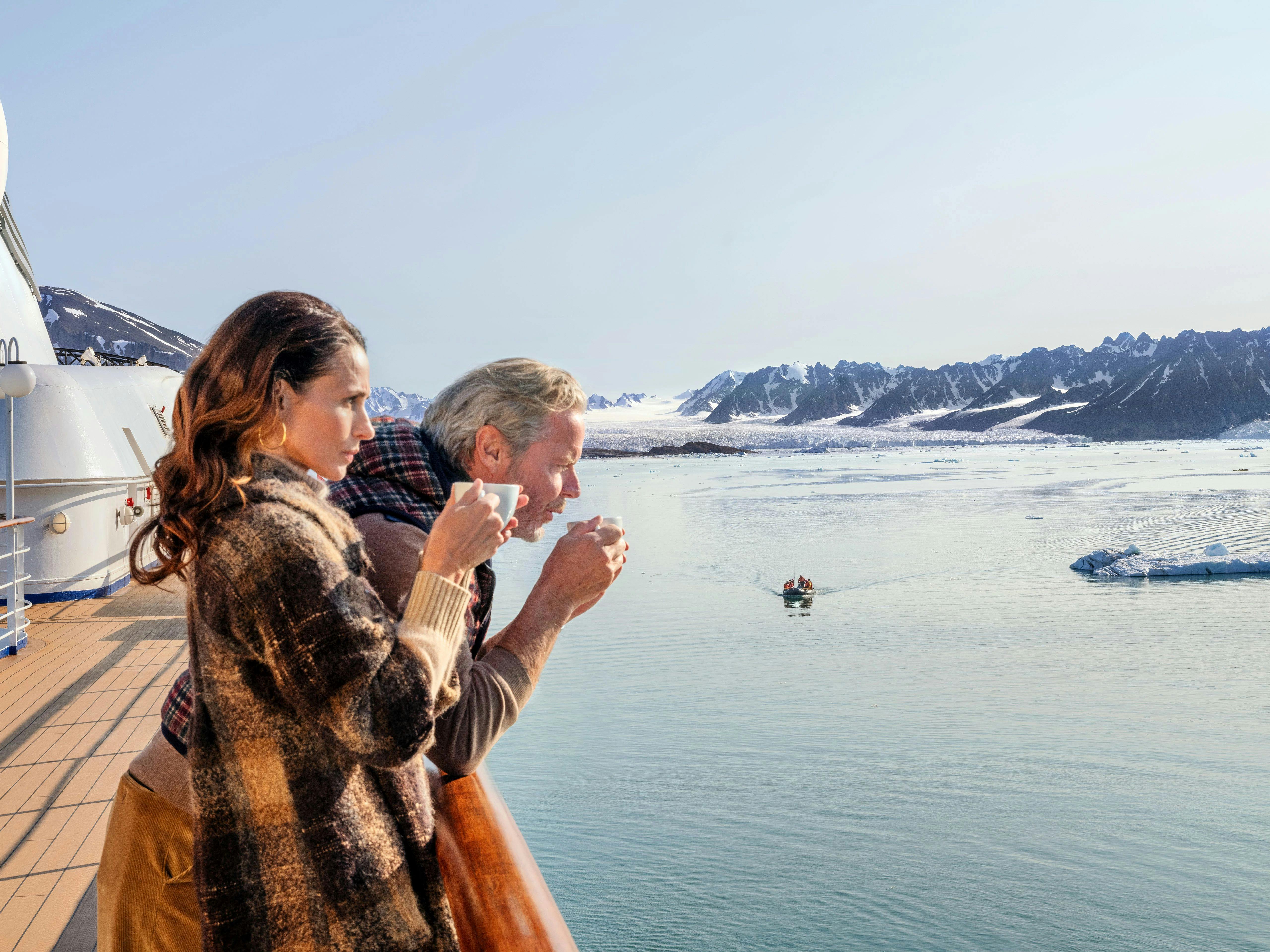Silversea’s Ultimate Polar Packing Guide: the Arctic and Antarctica
I started assembling a mental checklist for my expedition trip to Arctic Greenland a few weeks ahead of departure, and, unexpectedly, panic set in.
Usually, I pack a day or two ahead of a big trip. That’s cutting it close for some people, and I knew better than to take it down to the wire for this journey. Cruising the unofficial Facebook page for Silversea guests – past, present and future – sparked that anxiety.
Fellow passengers cautioned other cruisers about the 48.5-pound weight allowances for luggage and explained which sunglasses work best for an environment that could be blindingly white. Some guests were concerned about formal wear for dressy evenings; others were worried about how to use touch-screen phones while wearing thick gloves. If I was lucky enough to kayak amid the icebergs, what gear was I responsible for and what would Silversea’s expedition crew provide?
Just what does one pack when traveling to the polar ends of the Earth?
What you don’t need for polar cruises

First, let’s define the polar regions at the top and bottom of the world. At the Arctic end, it’s Greenland, Iceland, Canada’s northern islands and the Northwest Passage, Svalbard. At the other end, Antarctica.
Next, let’s clarify that what goes for Silversea’s Expedition ships – Silver Cloud, Silver Wind and Silver Endeavour – the polar regions. Silver Origin serve only the Galápagos. On fleet’s Classic ship, more formal attire may be expected some evenings.
Dress-up clothing for formal nights. I packed a sports jacket and used it once (sans tie) on my Arctic trip when I dined at La Dame, Silversea’s elegant French restaurant. The jacket wasn’t required, and I wouldn’t have felt uncomfortable if I’d been wearing just a decent button-down shirt, so I’d leave the jacket behind the next time.
At dinner time, most passengers I sailed with on a Silversea expedition ship adopted smart, casual wear.
Anything cotton, for off-ship exploration. That includes jeans, says Chez Chesak, the executive director of the Outdoor Writers Association of America. “It’s fantastic for breathabilty,” Chesak says, meaning it allows moisture to pass through the material. “But if it gets wet, it will not retain your body heat.” Heavy-duty denim pants can weigh up to a pound, more when they are wet, which is unfortunate because wet denim takes a long time to dry.
Besides jeans, Chesak also avoids taking cotton hoodies and pullovers for cold-weather destinations. Before you buy, check the label.
A fleece jacket. That’s because a red fleece jacket will await you in your cabin, courtesy of Silversea. You’ll be asked for your size before the sailing, and if you need a different size, you can exchange it the first night of the cruises.
Kayak gear. Getting onto the water in a two-seat kayak provided some of the most memorable moments of my Greenland cruise. Fortunately, I didn’t need a dry suit, kayak skirt, booties or life vest; Silversea provided all of that. The expedition team can provide a dry bag for safely storing electronics such as a phone or camera while out on the water.
Here’s what you should pack for a polar cruise
Think layers. On colder, wetter days, I wore three layers of clothing, starting with an inner, base layer designed to keep me warm and to wick moisture from sweat; even in the coldest temperatures we perspire. Long underwear was essential for my legs, and I wore T-shirts made from a thin layer of snug Merino wool for my torso.
A looser synthetic garment made up the middle layer of clothing, the one designed to keep me warm. This was either a fleece vest or lightweight wool sweater. I liked having a pair of “convertible” pants with zipper-off legs that could double for shorts for the occasional day when temperatures allowed. These were ideal even when it was raining.
When wet weather was likely, the outer layer for my legs was rain pants. These kept me dry during the near-daily Zodiac transfers that sometimes involved a bit of spray when wind or waves kicked up. For my upper body, the red Silversea jacket worked fine as an outer layer.
Again, even though it’s cold, your body can work up a sweat so you may end up removing or adding layers when you’re out and about. Carrying a small, easily accessible bag will provide a place to store those garments until you need to put them back on, Chesak notes.
As you are choosing gear, you may need the guidance of an expert, often found in stores that specialize in outdoor gear. When you are making choices of clothing, again, make sure you read the label, especially to find out whether a synthetic contains petroleum products, which Chesak calls “the baddest boy in terms of your safety.”
These are indispensable: Other items I’m glad I packed included several pairs of wool socks and underwear, a hat that covered my ears (a few wore a balaclava, which covers the whole head, except for the eyes, but a neck warmer would do). Proper hiking shoes are a must.
Take care of your eyes. “Don’t skimp on eyewear,” Chesak says. “Don’t grab a $5 pair of sunglasses.” Many kinds of glacier glasses also have hooks behind the ears, which may keep you from dropping them. “And remember that the sun may be coming at you from all over so don’t forget to put sunscreen on the exposed bottom of your nose.”
For my protection, I also took a pair of snow mittens. I never needed them, except for their fleece liner inserts; they were a nice extra layer to have during kayak trips yet thin enough that I could scroll the touch screen on my phone. I didn’t need waterproof boots, but I can’t imagine the discomfort one would have without them after wading through a bog. (For South Pole sailings, Silversea provides the boots, and the crew cleans them nightly.)
Is packing for Antarctica different from Arctic packing?

I checked in with Carolyn Spencer Brown, editor in chief of Silversea’s Discover blog, to see how different packing was for the Arctic vs. Antarctica. The big difference with Antarctica, she learned on her first trip to the South Pole, is that visitors are subject to strict requirements, Spencer Brown says, about what they wear ashore, particularly boots, which the crew are cleaned daily by the crew.
Silversea will rent you the boots as well as waterproof pants that you can wear over leggings or other pants. Here, Silversea also gifts all guests with a super-warm parka that you can take home. (Just be e to leave room for it in your suitcase as you’re packing to head home.)
“I bought a few pairs of moisture-wicking leggings and T-shirts from Patagonia, and these were my uniform for excursions,” she says. “Onboard, I found that a couple of sweaters and a couple of silky jackets over black pants were more than enough for the entire cruise.

“The best thing that kept me warm – and that I didn’t bring me with me – was a wool Patagonia neck warmer that I scored at Silver Endeavour’s gift shop. It also filled in as a hat if necessary. One other tip I’d add: Bring super-comfy shoes (I brought a pair of worsted wool mules made in Germany) to wear to the mudroom where you exit and enter the ship; there, you have a locker where you can store them once you’ve put on your boots.”
Packing a swimsuit may seem strange, but trust me

You don’t want to miss out on the adventure of a polar plunge, so named because you literally leap into the Arctic or Antarctic oceans for a (very) quick swim. A touch more comfortable is the chance to sit in an alfresco whirlpool and soak in hot water while the glorious glaciers of the polar regions sail past you.
You really can be a light packer

Some people have a knack for traveling light. On a multiweek group trip to India, I marveled at one woman who moved quickly in and out of taxis, trains and planes with a surprisingly modest amount of luggage, yet she managed to look smashing night after night.
It wasn’t until a week into the trip that I figured out her secret: She packed three pairs of nearly identical black slacks and white blouses – a uniform she sore most days and every evening. But she also brought at least a half-dozen silk scarves and lightweight necklaces that she alternated nightly to keep her look fresh.
Although I haven’t resorted to an all black-and-white packing list, that fellow traveler is a reminder to me on every trip that you can do more with less.
Catharine Hamm also contributed to this report.
